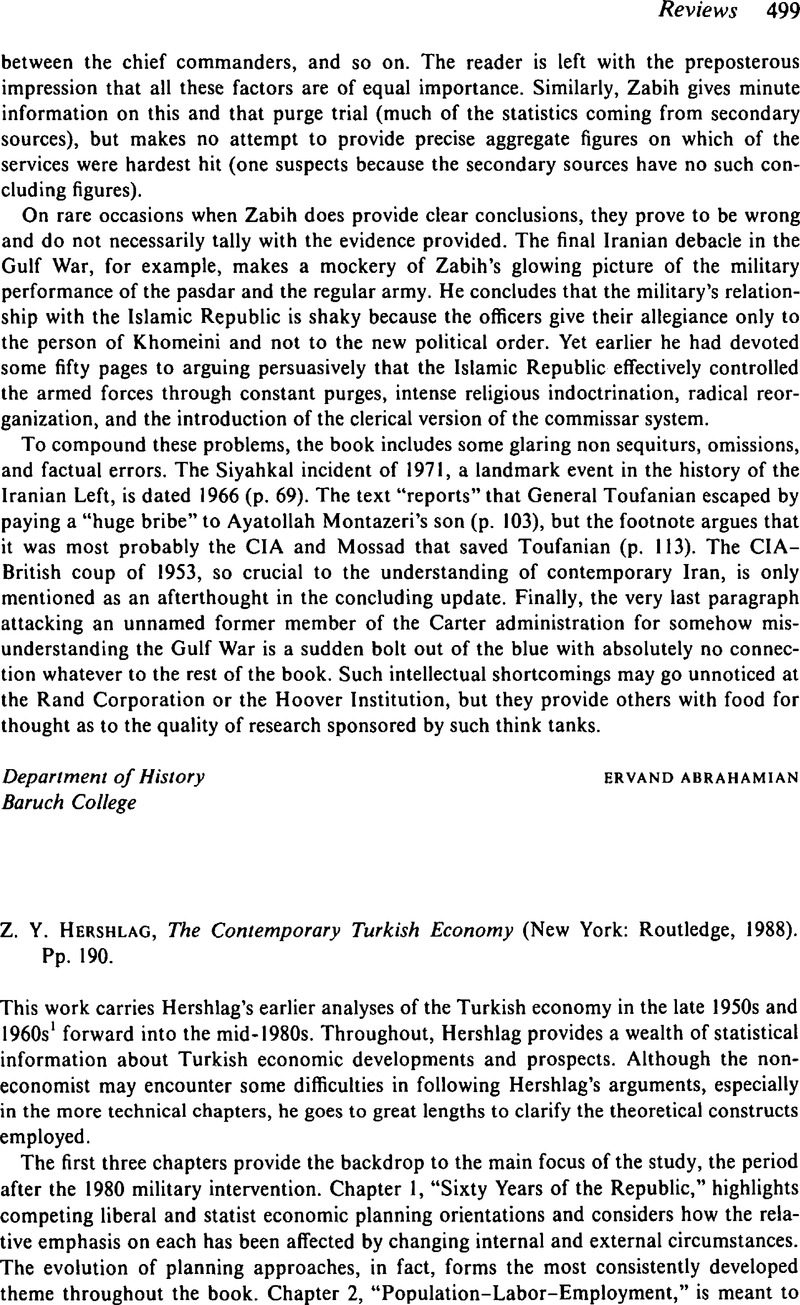No CrossRef data available.
Article contents
Z. Y. Hershlag, The Contemporary Turkish Economy (New York: Routledge, 1988). Pp. 190.
Review products
Published online by Cambridge University Press: 29 January 2009
Abstract

- Type
- Reviews
- Information
- Copyright
- Copyright © Cambridge University Press 1990
References
1 See Hershlag, Z. Y., Turkey, An Economy in Transition (The Hague, 1958)Google Scholar; idem, Turkey the Challenge of Growth (Leiden, 1968).
2 This is the view of Ketenci, Şükran and Boratav, Korkut in Kuruç, Bilsay et al. , Birakiniz Yapsinlar, Birakiniz Geçsinler; Türkiye Ekonomisi, 1980–1985 (Ankara, 1985).Google Scholar
3 Schick, Irvin Cemil and Tonak, Ertuğral Ahmet, eds., Turkey in Transition: New Perspectives (New York, 1987), p. 363.Google Scholar
4 On these holdings, see for example, Tekelli, Ilhan, “Turkiyede Holdinglesme ve Holding Sistemlerinin Mekânda Örgütlenmisi,” in Türkiyede Kentleşme Yazilan (Ankara, 1982), pp. 261–97.Google Scholar
5 On the smaller production units, see for example, Bademli, Rasit Raci, “Distorted and Lower forms of Capitalist Industrial Production in Underdeveloped Countries: Contemporary Artisan Shops and Workshops in Eskisehir and Gaziantep, Turkey” (Ph.D. diss., Massachusetts Institute of Technology, 1977).Google Scholar
6 The policy objectives since 1980 of dismantling the incentives system in agriculture by eliminating all input subsidies and reducing price support in real terms is discussed by Kasnakoğlu, Haluk, “Agricultural Price Support Policies in Turkey: An Empirical Investigation,” in Richards, Alan, ed., Food States and Peasants: Analysis of the Agrarian Question in the Middle East (Boulder, Colo., 1986), pp. 97–130.Google Scholar
7 See for example, Mülayim, Ziya Gökalp, Assessment of Rural Landlessness in Turkey (Ankara, 1985).Google Scholar


